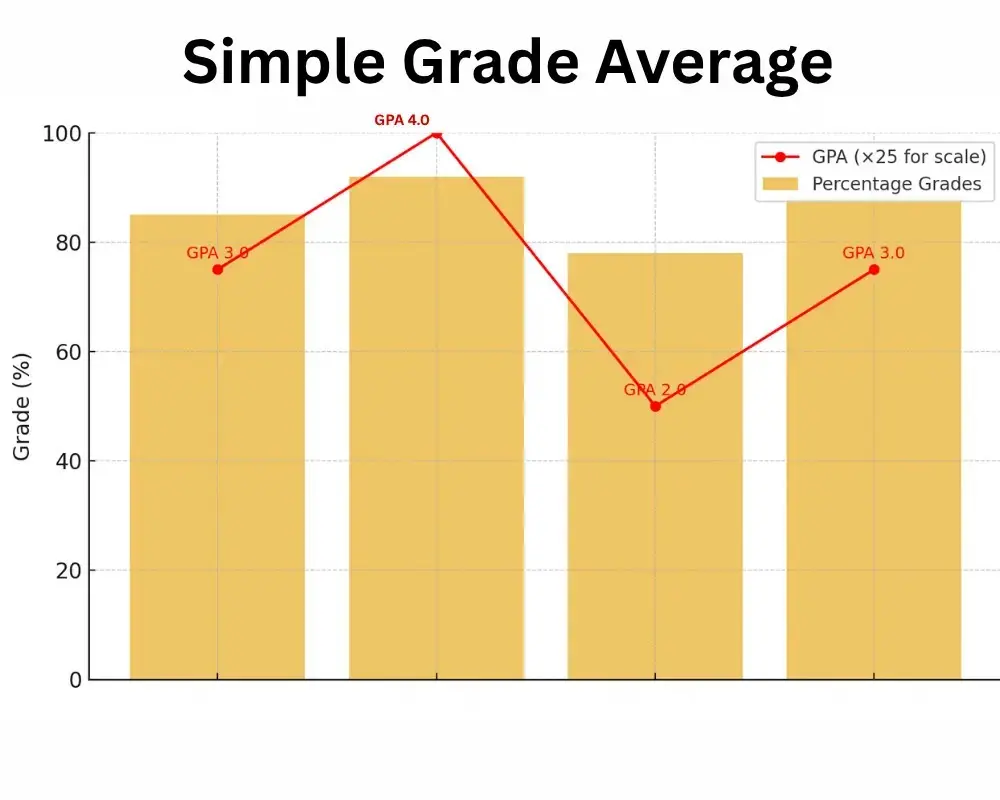How to Calculate Grade Average in High School? (Guide)

Do you know you can hold your report cards even more confidently when you have already planned your goals? That’s why, while you are in school, understanding your grade average can significantly impact your future outcomes. Whether you want to make sure that you’re on track to be eligible for a scholarship, honors, or sports, knowing how to calculate your position is a must.
Why Knowing Your Grade Average Matters
Your total marks serve as a roadmap that you cannot ignore, at any cost, to reach your desired target. It’s not just a number on paper but something that represents your academic growth and performance. Not just that, but it can affect your eligibility for scholarships, sports, honors, and college admission. Keeping a close eye on your overall mark is a wise decision
Methods to Calculate Your Grade Average in High School
During my teaching career, I have noticed confusion on the faces of many students because they are unsure of their standing and the outcome they will achieve. But knowing the average score can ease this stress. Before going into details to calculate grade average, you may like to read our post on how to calculate grade percentage in high school to understand how you can do the calculation to know percentages. According to the Educational Testing Service, Americans’ grading practices in high school vary considerably because different districts use a range of systems, including percentages, scores, letter grades, and mixed systems. That’s why there is more than one method to calculate averages, but the most popular ones are explained below:
Simple Grade Average (unweighted)
In simple grading systems (unweighted), calculating the cumulative is the easiest. In this system, every class will have equal value, with no extra weight given to any class. If you’re sure that your high school follows this system, follow the steps below to determine your academic outcomes.
- Write on paper your final grade for every class, whether it’s in letter or percentage form.
- If your final grades are in letter format, then you should convert them to the 4.0 scale. Follow the table below to convert them.
| 4.0 Scale to Convert Letter into Grade |
| A = 4.0 |
| B = 3.0 |
| C = 2.0 |
| D = 1.0 |
| F = 0.0 |
- Till this step, you have already converted your earned letters. Now add up all your grades together.
- Now divide them by the total number of classes.
Your scores should look something like this now; otherwise, it will be considered that the above steps are not accurately done, and you need to do them again.
Your Grade (Letter or Percentage) Converted to 4.0 Scale (A, B, C, D, or F)
Now, add up all converted grades, and make a total. Divide it by the total number of classes, and it will be the true average, and that’s how you can calculate your rank in an unweighted structure.
For a more precise understanding, consider the infographic below:

Weighted Grade Average
The weight system works differently because the different classes will have varying weights, not equal ones. Mostly honors and AP classes will have more weight. If your school uses a weighted system, follow the steps below to calculate your total accomplishment.
- First of all, you will need to know the different weights assigned to your different classes.
- After identifying it, multiply the grade of each class by its weight.
- Add up all weighted values.
- Now divide the total of weighted values by the number of classes.
Standards-Based Approaches
This approach system is different from the traditional average one. In it, adding points or dividing will not work; instead, these students will be required to master specific skills. In short, students must meet specific standards to receive a good final report
Common Mistakes Students Should Avoid
There are a few essential things to keep in mind while doing calculations; otherwise, you will not get accurate results. A few mistakes are listed below for your consideration so that you can avoid them.
- Always remember, in weighted systems AP and Honor hold a larger portion of the weights, so while doing calculations, include their correct weight.
- Don’t use raw percentages to calculate grade average. Always convert the percentage to a grade before starting the calculation.
- Double-check to confirm which grading systems your school is following.
Grading Calculator for Your Help
Calculating the grade average manually can be risky if you are unable to estimate it accurately. So why take a risk even when putting a lot of effort into knowing it? Let our grade calculator handle this job for free for you, ensuring that you will get an accurate report. Try this most accurate tool today for all your grading needs.
Conclusion
In your educational journey, your performance card will decide where you will be in the future. So make your best efforts for improving it day by day, to achieve what you want. For this review, the grading system used by your institution is. Apply all the required steps manually in sequence to obtain accurate calculations, or use the grade calculator to get results instantly. By using it, you can save a significant amount of time and energy, reducing stress before your finals.





